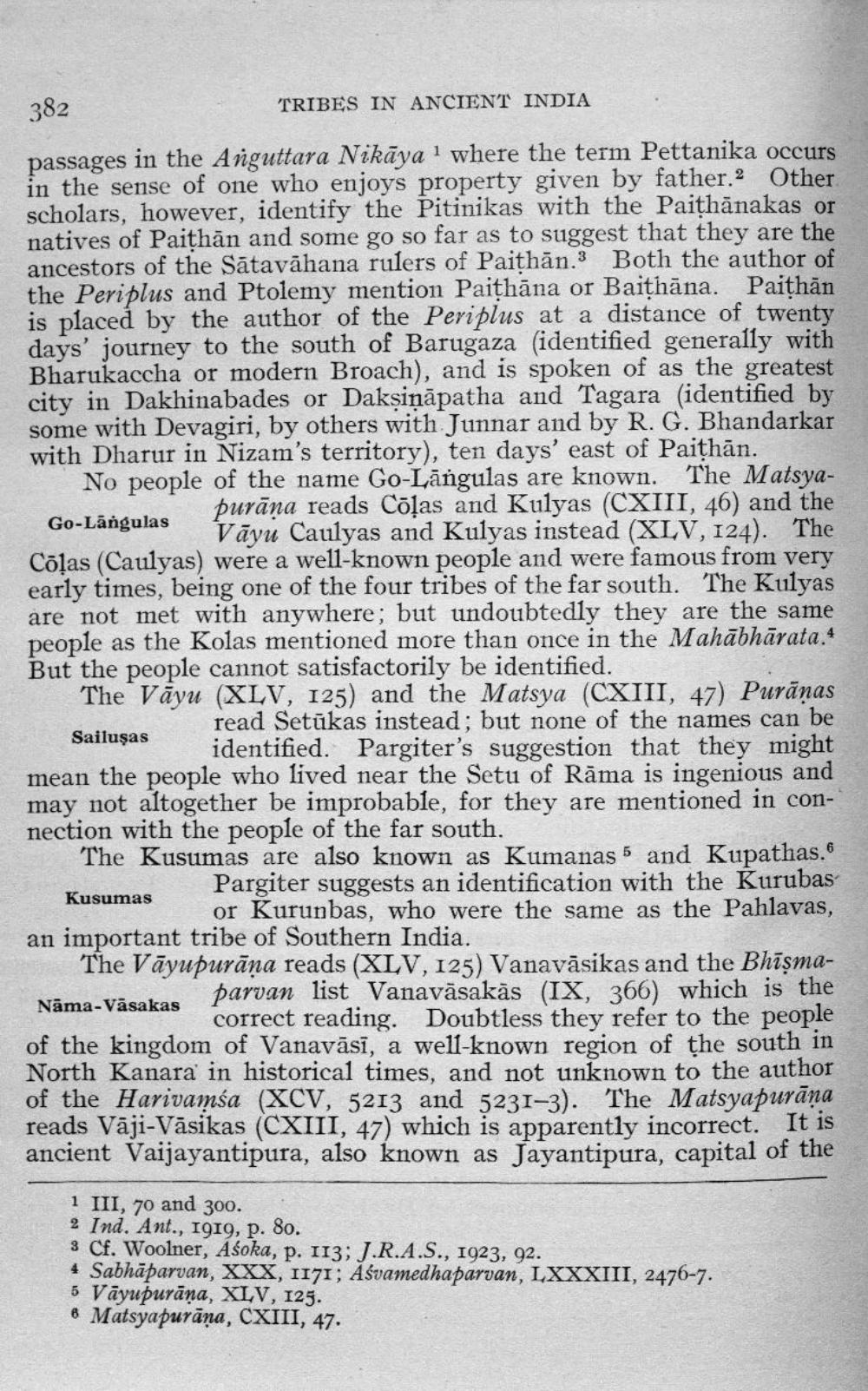________________
382
TRIBES IN ANCIENT INDIA passages in the Anguttara Nikāya | where the term Pettanika occurs in the sense of one who enjoys property given by father.2 Other scholars, however, identify the Pitinikas with the Paithānakas or natives of Paithān and some go so far as to suggest that they are the ancestors of the Sātavāhana rulers of Paithān.3 Both the author of the Periplus and Ptolemy mention Paithāna or Baithāna. Paithān is placed by the author of the Periplus at a distance of twenty days' journey to the south of Barugaza (identified generally with Bharukaccha or modern Broach), and is spoken of as the greatest city in Dakhinabades or Daksināpatha and Tagara (identified by some with Devagiri, by others with Junnar and by R. G. Bhandarkar with Dharur in Nizam's territory), ten days' east of Paithān. No people of the name Co.
people of the name Go-Längulas are known. The MatsyaGo-Lāngulas
purāna reads Cēļas and Kulyas (CXIII, 46) and the
Vāvu Caulyas and Kulyas instead (XLV, 124). The Côļas (Caulyas) were a well-known people and were famous from very early times, being one of the four tribes of the far south. The Kulyas are not met with anywhere; but undoubtedly they are the same people as the Kolas mentioned more than once in the Mahābhārata.4 But the people cannot satisfactorily be identified. The Vāyu (XLV, 125) and the Matsya (CXIII, 47) Purānas
read Setūkas instead; but none of the names can be Sailusas
identified. Pargiter's suggestion that they might mean the people who lived near the Setu of Rāma is ingenious and may not altogether be improbable, for they are mentioned in connection with the people of the far south. The Kusumas are also known as Kumanas 5 and Kupathas.
Pargiter suggests an identification with the Kurubas Kusumas
or Kurunbas, who were the same as the Pahlavas, an important tribe of Southern India.
The Vāyupurāna reads (XLV, 125) Vanavāsikas and the BhīşmaNāma-Vāsakas
parvan list Vanavāsakās (IX, 366) which is the
parvan li
do correct reading. Doubtless they refer to the people of the kingdom of Vanavāsī, a well-known region of the south in North Kanara in historical times, and not unknown to the author of the Harivamsa (XCV, 5213 and 5231-3). The Matsyapurāna reads Vāji-Vāsikas (CXIII, 47) which is apparently incorrect. It is ancient Vaijayantipura, also known as Jayantipura, capital of the
1 III, 70 and 300. 2 Ind. Ant., 1919, p. 80. 3 Cf. Woolner, Aśoka, p. 113; J.R.A.S., 1923, 92. 4 Sabhāparvan, XXX, 1171, Aśvamedhaparvan, LXXXIII, 2476-7. 5 Väyupurāna, XLV, 125. 8 Matsyapurāna, CXIII, 47.




